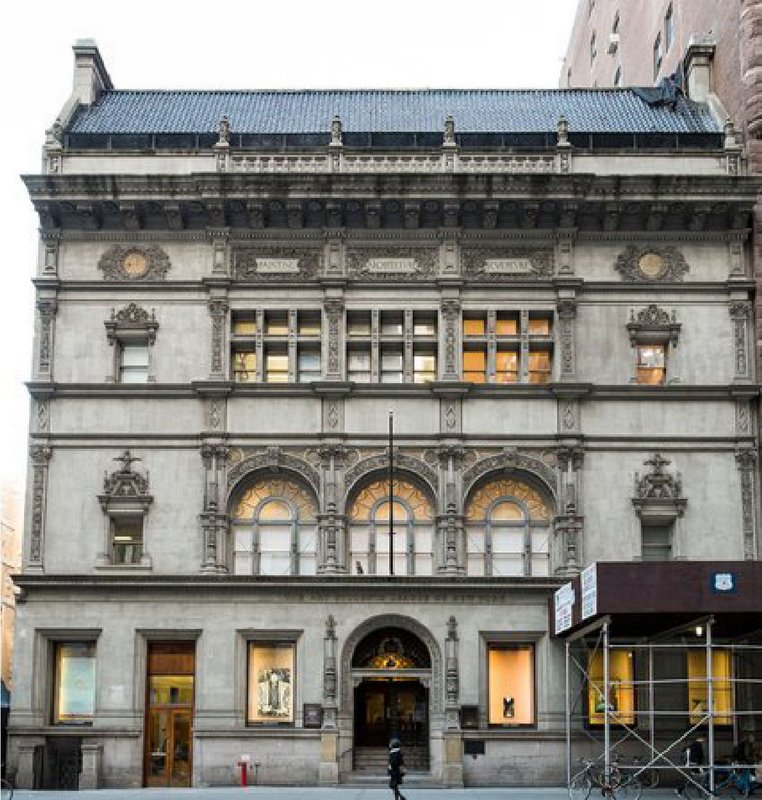 Photo courtesy of the Arts Students League
Photo courtesy of the Arts Students League
The American Fine Arts Society building, home to the Arts Students League, is a landmarked gem at 215 West 57th Street, its front doors swinging open at frequent and regular intervals, offering a glimpse of the teeming creative life that still hums inside. From its founding in 1875, the Arts Students League sought to explore and express ideas outside the artistic norms of the time, particularly the concepts emerging from the avant-garde movements in Paris and Munich.
Jackson Pollock, Georgia O’Keefe, Robert Rauschenberg, and Robert Smithson are just a few of the notable artists that were once students at the Arts Students League. The 1966 Landmarks Designation Report describes the society’s illustrious heritage glowingly: “The roster of former League students, members, and instructors…reads like a Who’s Who in American Art. The School has had a tremendous influence on art in this country. The membership lists are studded with names of the famous, representing every idiom of the arts.”
Today, over 5000 students a year take a wide range of affordable art classes at the Arts Students League under the direction of world class artists and teachers. We recently took a tour with Ken Park, Director of Communications and Institutional Fundraising at The Arts Students League who shared with us the organization’s history and the secrets of its building on 57th Street.
10. The Arts Student League Building was Designed by a Famous Architect
 The Arts Students League at the American Fine Arts Society building on 57th Street. Photo courtesy of the Arts Students League.
The Arts Students League at the American Fine Arts Society building on 57th Street. Photo courtesy of the Arts Students League.
The Arts Students League Building at 215 W. 57th Street was designed by prolific architect Henry J. Hardenbergh, known in New York City for designing the Dakota Apartments, the first Waldorf hotel, the Plaza Hotel, and more. A landmarked historic district on the Upper East Side, the Hardenbergh/Rhinelander Historic District, bears his name and is one of the smallest historic districts in Manhattan.
The French Renaissance-inspired building combines an ornamented façade with a balanced (and nearly symmetrical) architectural design. It was built at a cost of $400,000, which would be equivalent to around $9 million in 2017 dollars, when adjusted for inflation. An article in the New Outlook contends that within the new building, “it may be pretty safely predicted the artistic spirit of New York will henceforth find its chief theatre.”





